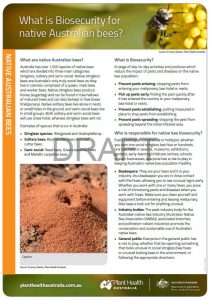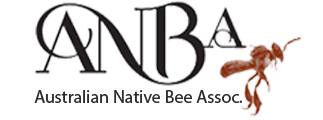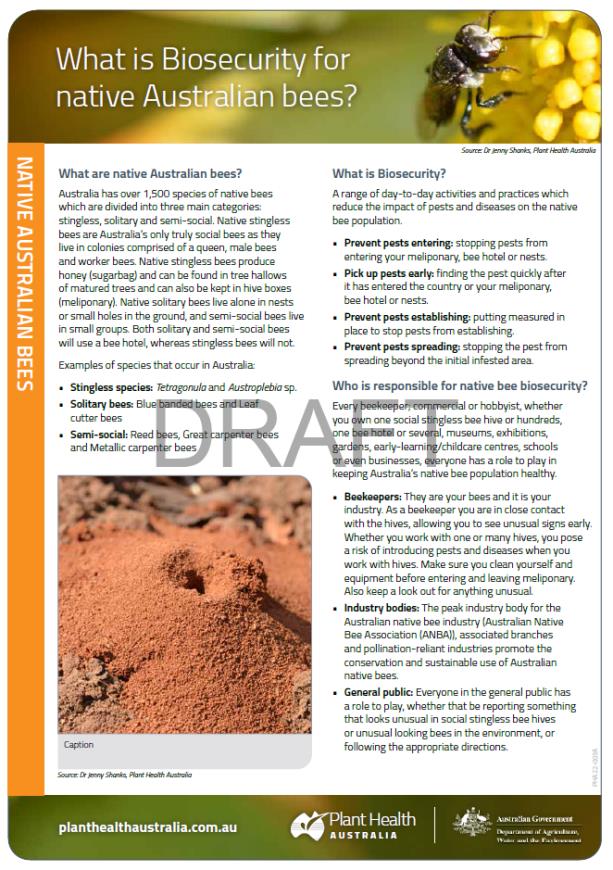
Australia has a diverse native bee fauna that is free from many of the pests and diseases that exist overseas. But pathways for their entry exist and we must work to keep them out. Biosecurity is the responsibility of everyone. The benefits of native bee biosecurity include:
• Healthy native bees that are more productive and better pollinators,
• Lower costs and less time spent managing pests,
• Keeping our markets and opening the door to new market opportunities,
• Reduced risks when relocating bees.
Pests can be invertebrate pests (like mites or insects) or microscopic pathogens that cause disease. They could enter the country along pathways such as:
• Import of cut flowers or live plants into Australia from overseas.
• Through honey bees, e.g. viruses of honey bees may also infect native bees.
• Interstate movement of native bees
Plant Health Australia, in collaboration with the Australian Native Bee Association, hosted a 5-hour virtual work-shop on Tue 29 March 2022 on potential environmental and biosecurity risks/threats to Australian native bees. Funded by the Office of the Australian Chief Environmental Biosecurity Officer, this workshop attracted over 100 people from a broad diversity of backgrounds. ANBA have been involved in this process from an early stage (see Cross-Pollinator Issue 14, September 2020).
To manage such a large audience, a series of polls were held during the day to gauge opinion. We thank the PHA team Rod Turner, Jenny shanks and Kathryn Pagler who have done most of the work leading up to the workshop. Rod is retiring but Jenny and Kathryn will continue to drive this project. ANBA president Ian Driver held the floor for a few minutes to present our perspective. Trevor Weatherhead from the Honey Bee industry council also spoke.
Significant differences exist between the honey bee and native bee industries. The honey bee industry raises nearly $1M to fund biosecurity. They have excellent biosecurity resources and contingency plans in case of incursion. Restrictions are in place for honey bees, but not for native bees. Little literature is available on stingless bee biosecurity threats, no di-agnostic labs exist, and stingless bee brood cannot be easily inspected.
To avoid legislation for native bees and to stay out of the sights of regulators, we need to self-manage, implement best practise, set up codes of conduct, spread sound advice and recommendations for management of native bees. A lot of it is common sense, such as good hygiene when managing your hive.
Some questions that we will need to discuss include whether we need Biosecurity code of practice. ANBA sup-ports the development of a voluntary code. Do we need a research levy for stingless bees to support action? A small levy could be collected on sale of hives or honey. ANBA suggests a voluntary levy at this stage.
One of the tangible end products of this project will be a series of factsheets which will help interested parties to help to identify, protect against and report threats such as native bee pests and diseases. ANBA is working with PHA to produce these factsheets.
The development of a biosecurity plan aligns with two activities of the Native Bee RD&E plan (https://www.agrifutures.com.au/product/australian-native-bee-strategic-rde-plan/), including:
4.4.2 Develop a national source of reliable quality information and knowledge about managed native bees.
5.3.1 Understand biosecurity risks to native bees and develop biosecurity strategies, including ensuring against the import of exotic bees, pests and diseases, and protection from genetic material that may carry disease.

